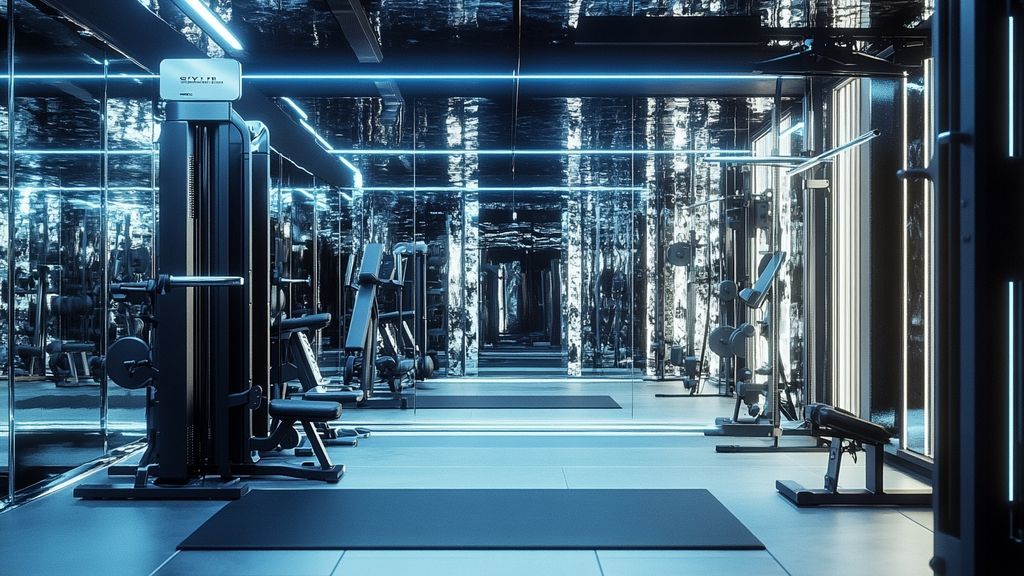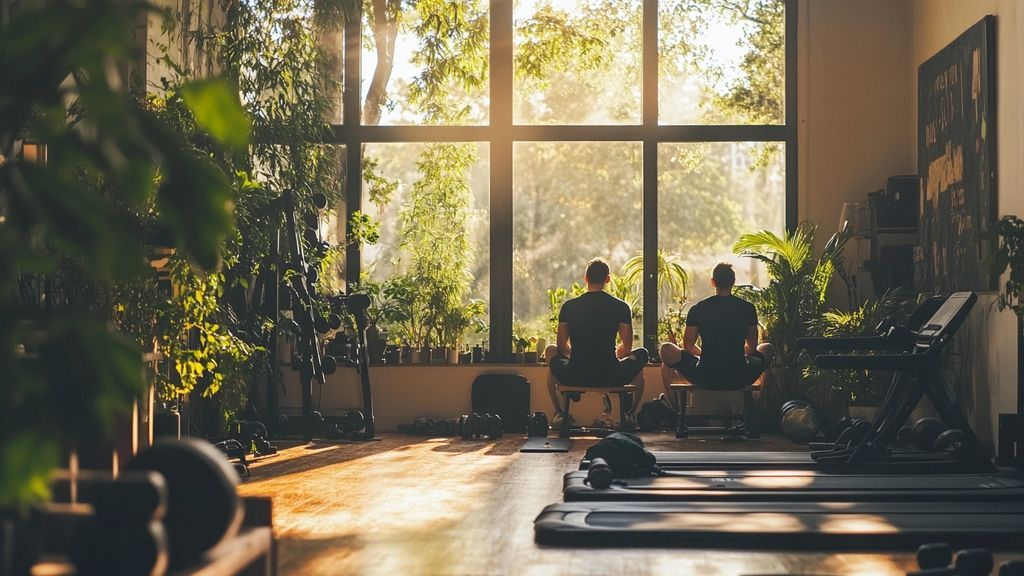In today’s fast-paced world, many individuals are searching for effective ways to improve their fitness without necessarily having access to a traditional gym. CrossFit, known for its high-intensity and functional training, can be adapted for at-home workouts. This article illuminates methods to maintain and even boost your CrossFit skills from the comfort of your own space. Let’s explore how to make significant progress while working out from home.
Whether you’re constrained by time, lack of equipment, or even COVID-19-related restrictions, the ability to adapt your CrossFit training is crucial. This guide will provide you with unique strategies, tips, and insights to maximize your home workout experience, ensuring that your fitness levels remain high and your goals stay within reach.
Get ready to discover how you can effectively pursue CrossFit with little to no gym access, achieve your health ambitions, and push your performance to new heights.
Establishing Clear and Measurable Goals
The first crucial step to advancing in CrossFit without a gym is to set specific and measurable goals. This involves being mindful of what you aim to achieve, whether that is enhancing your strength, amplifying your endurance, or perfecting a specific movement.
Defining Your Objectives
Defining your objectives starts with self-assessment. Ask yourself questions like, “What areas do I need the most improvement in?” or “Am I looking to increase my performance in competitions?” Tracking your progress is equally important; document your workouts and results to maintain accountability.
Using smart goal methodology can be effective here. SMART stands for Specific, Measurable, Achievable, Relevant, and Time-bound. By creating goals that adhere to this framework, you can ensure they are reachable and effective.
Regularly Review and Adjust Your Goals
It is essential to review and adjust your goals periodically. As you progress, you may find certain objectives become outdated or easier to achieve. Adjusting these objectives keeps your training challenging and rewarding.
Accountability and Community Support
Engaging with a community, even online, can also help in maintaining motivation toward your goals. Finding accountability partners or groups dedicated to home CrossFit can provide a support network that encourages everyone involved to achieve more together.
Creating a Dedicated Workout Space at Home

Having a designated workout space at home is vital for psychological readiness and efficiency during exercise. It is all about creating an environment that encourages consistency and focus on your workouts.
Choosing the Right Location
Your workout area should be spacious enough for various movements. A quiet corner in your living room, garage, or backyard can serve this purpose. Ideally, it should be well-ventilated and free from clutter to foster an inviting workout atmosphere.
Personalizing Your Workout Space
Consider personalizing the space to reflect motivation in your workouts. This can include inspirational quotes, fitness posters, or even photographs of achievements. Personalized elements serve as reminders of why you started your fitness journey in the first place.
Safety and Comfort
Safety should be prioritized in your workout space. Ensure that the flooring provides adequate grip and supports your movements to prevent injuries. Additionally, keep necessary equipment within reach to avoid wasting time during workouts.
Investing in Minimal Equipment
CrossFit workouts can often be performed with minimal equipment, allowing you to keep progressing at home. While some CrossFitters may feel the need for a full gym setup, investing in essential equipment can provide versatile training without the strain on your wallet.
Essential Equipment for CrossFit at Home
A few key pieces of equipment can greatly enhance your home workouts:
- Dumbbells: These allow for various strength-training exercises, making them invaluable.
- Resistance Bands: Ideal for adding intensity to workouts without heavy weights, these bands also assist in performing mobility exercises.
- Jump Rope: Fantastic for cardiovascular conditioning; it enhances coordination and endurance.
- Yoga Mat: Necessary for floor exercises, it also provides cushioning and stability.
Maximizing Equipment Use
Maximize the use of your equipment through varied workouts. Develop routines incorporating exercises like squats, deadlifts, overhead presses, and jump rope sessions. Bodyweight exercises such as push-ups and burpees can also enhance your training without needing any equipment.
Following Online Programming
Structured programming designed for home workouts is available online. Many credible coaches and CrossFit organizations provide various training schedules you can follow. Customized plans allow you to work at your own pace and provide direction, ensuring a well-rounded fitness experience at home.
Maintaining Consistency in Your Workouts

Consistency is the backbone of progress in CrossFit. Establishing a regular workout routine is vital for building strength and endurance over time, even when workouts occur at home.
Creating a Schedule
Create a training schedule that fits seamlessly into your daily life. Designate specific days and times for workouts to develop a habitual exercise regime. Sticking to this schedule can make working out a normalized part of your routine.
Staying Motivated
Finding ways to stay motivated when working out alone can be challenging. Engaging with social media platforms can provide virtual companionship and accountability. Follow CrossFit communities online or participate in social challenges to maintain motivation. Interactions with others can inspire and energize you.
Utilizing Timer-Based Workouts
Incorporate time-based workouts to enhance focus and intensity. High-Intensity Interval Training (HIIT) methods are effective for maximizing results in a short time frame. Integrating short bursts of intense activity followed by brief rest periods can create a dynamic workout plan that keeps you excited and engaged.
Focusing on Functional Movements
Traditional CrossFit emphasizes functional movements that mimic everyday activities. When following workouts at home, prioritizing these movements is integral to enhancing overall strength and stability.
Understanding Functional Movements
Functional movements facilitate efficient performance in daily tasks. Exercises such as squats, deadlifts, and press movements engage multiple muscle groups and improve core stability. These movements translate directly to form better physical capabilities both in and out of the gym.
Circuit Training with Functional Movements
Implementing circuit training can further enhance the use of functional movements. Design a series of exercises focusing on the same muscles or movement patterns, rotating between activities for a comprehensive workout experience. This strategy not only challenges you physically but also adds variety and interest.
Tracking Progress in Functional Movements
Monitoring your improvements in mastering functional movements can provide clear indicators of progress. Keeping a workout log of weight lifted, repetitions, or even durations can help set newer, more challenging goals as you advance.
Connecting with the CrossFit Community Virtually

The social element of CrossFit is incredibly valuable. Even though physical interactions may be limited, leveraging virtual communities can greatly enrich your training experience.
Online CrossFit Groups and Challenges
Engage in online CrossFit communities to connect with fellow fitness enthusiasts. Joining Facebook groups dedicated to at-home workouts or following Instagram fitness influencers can provide the camaraderie often experienced in gyms.
Participating in Virtual Events
Numerous organizations host virtual competitions, allowing you to participate from home. Joining these events can create a sense of competition and forge social bonds as you motivate each other to achieve fitness milestones.
Leveraging Social Media for Accountability
Creating a social media account dedicated to your fitness journey can help keep you accountable. Keeping your followers updated on your progress might spur additional encouragement from peers, cultivating your commitment to your goals.
